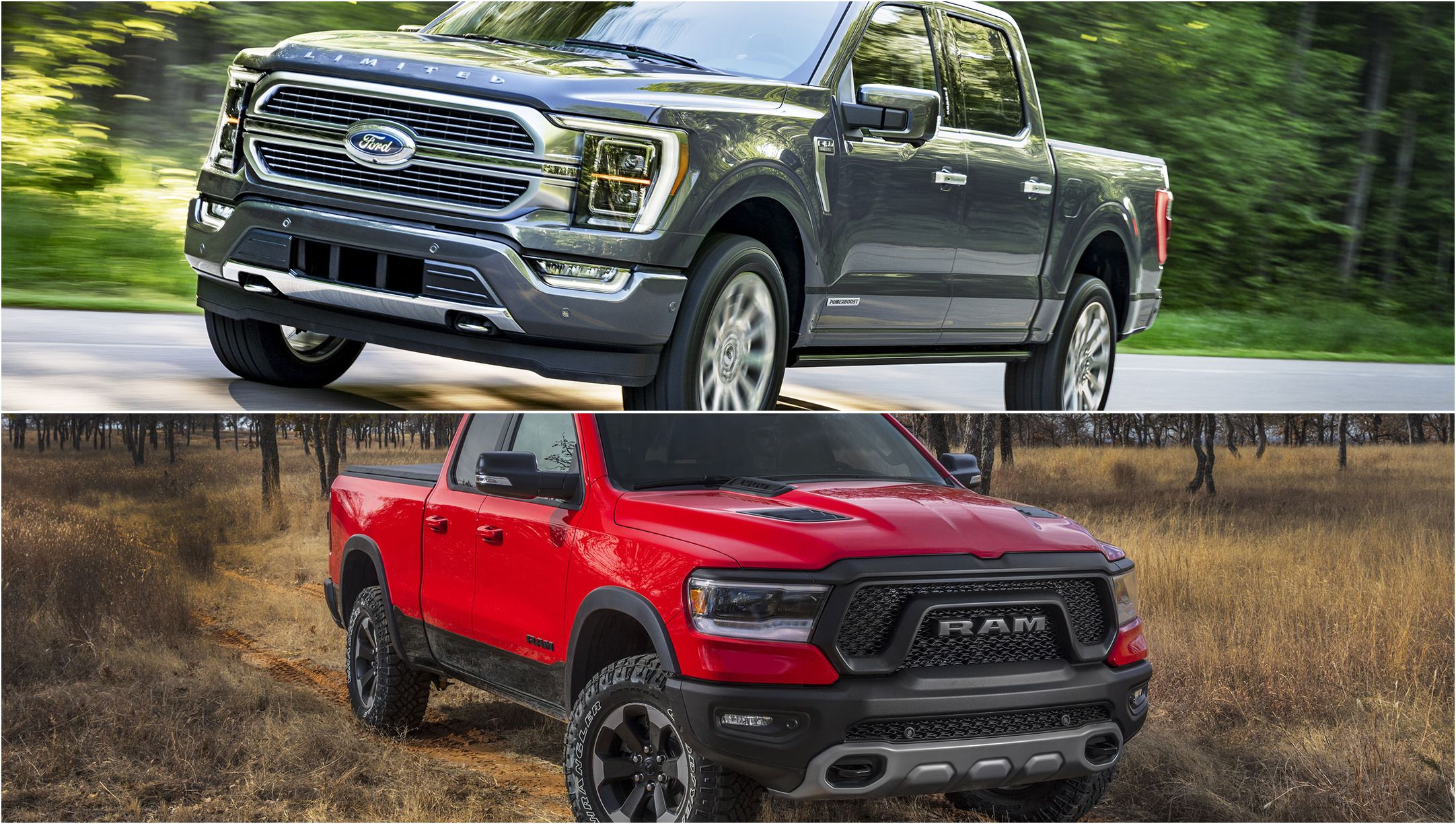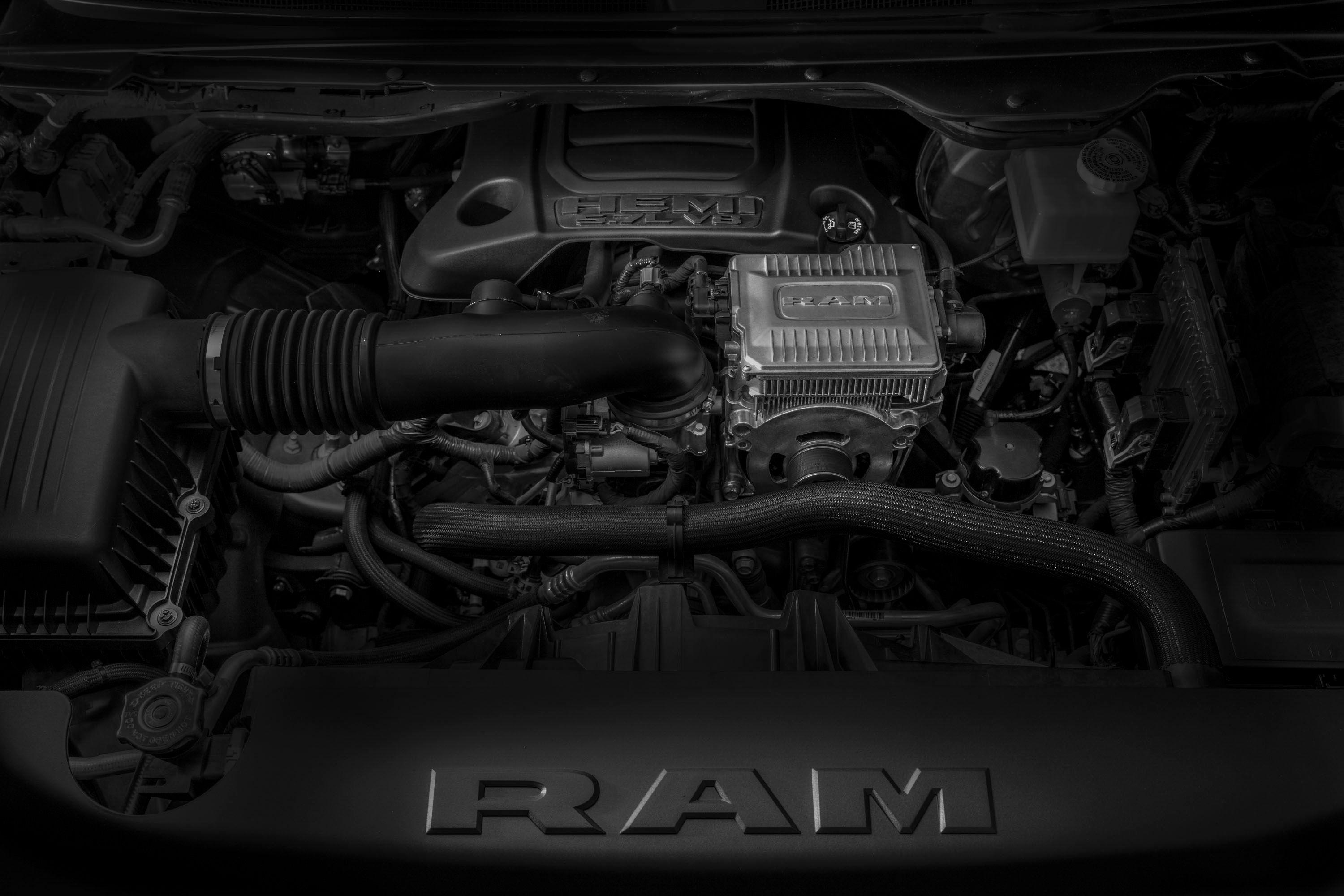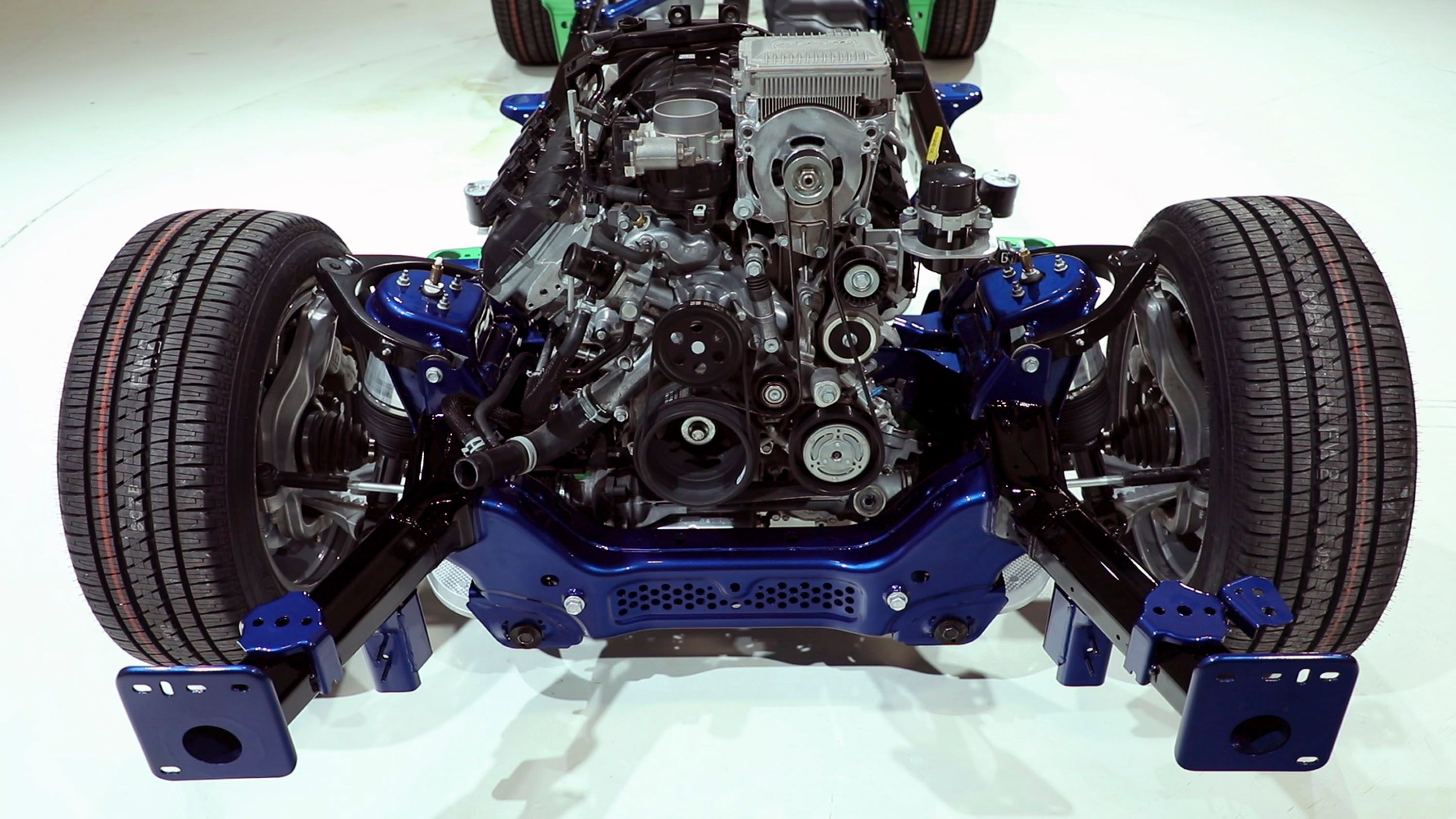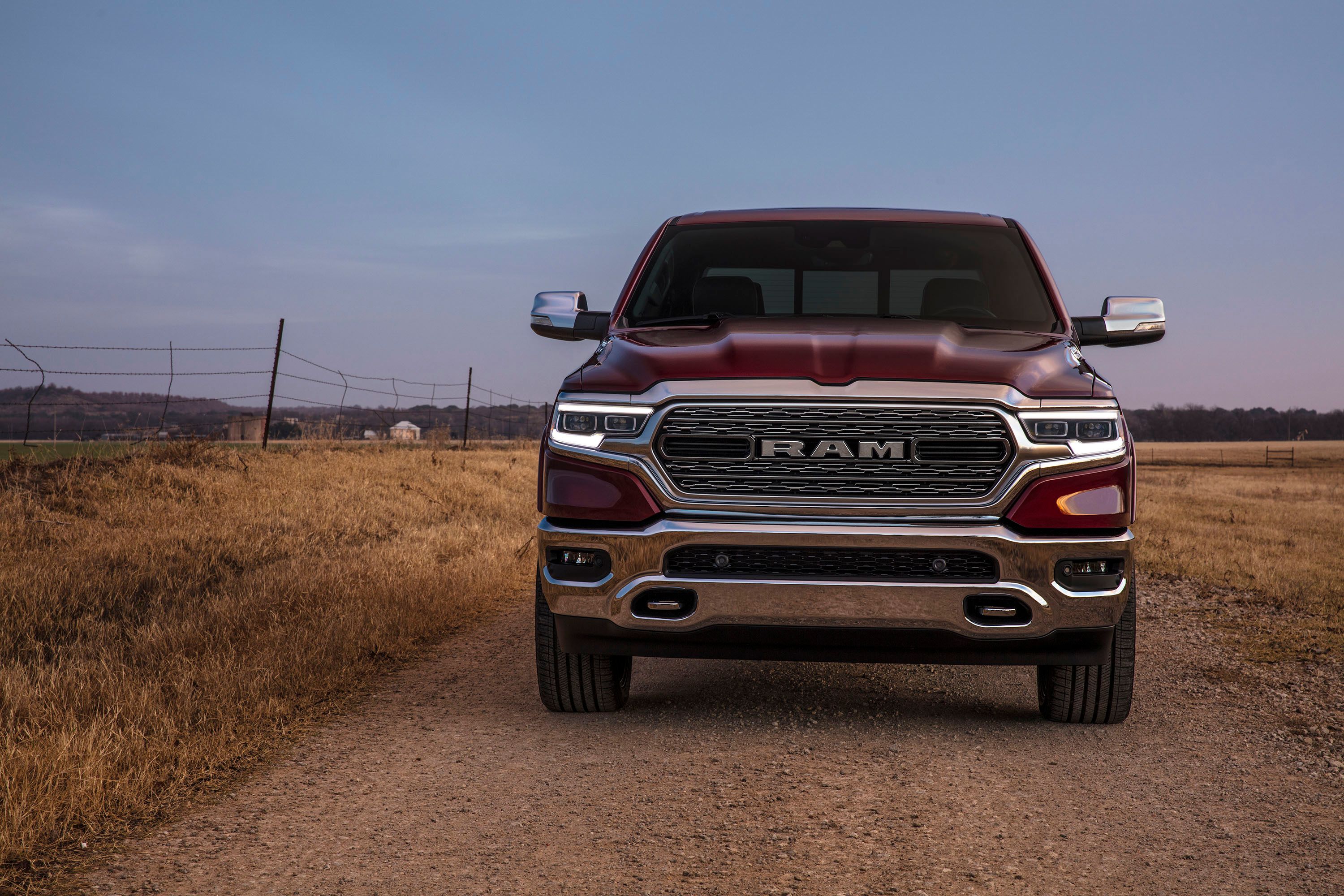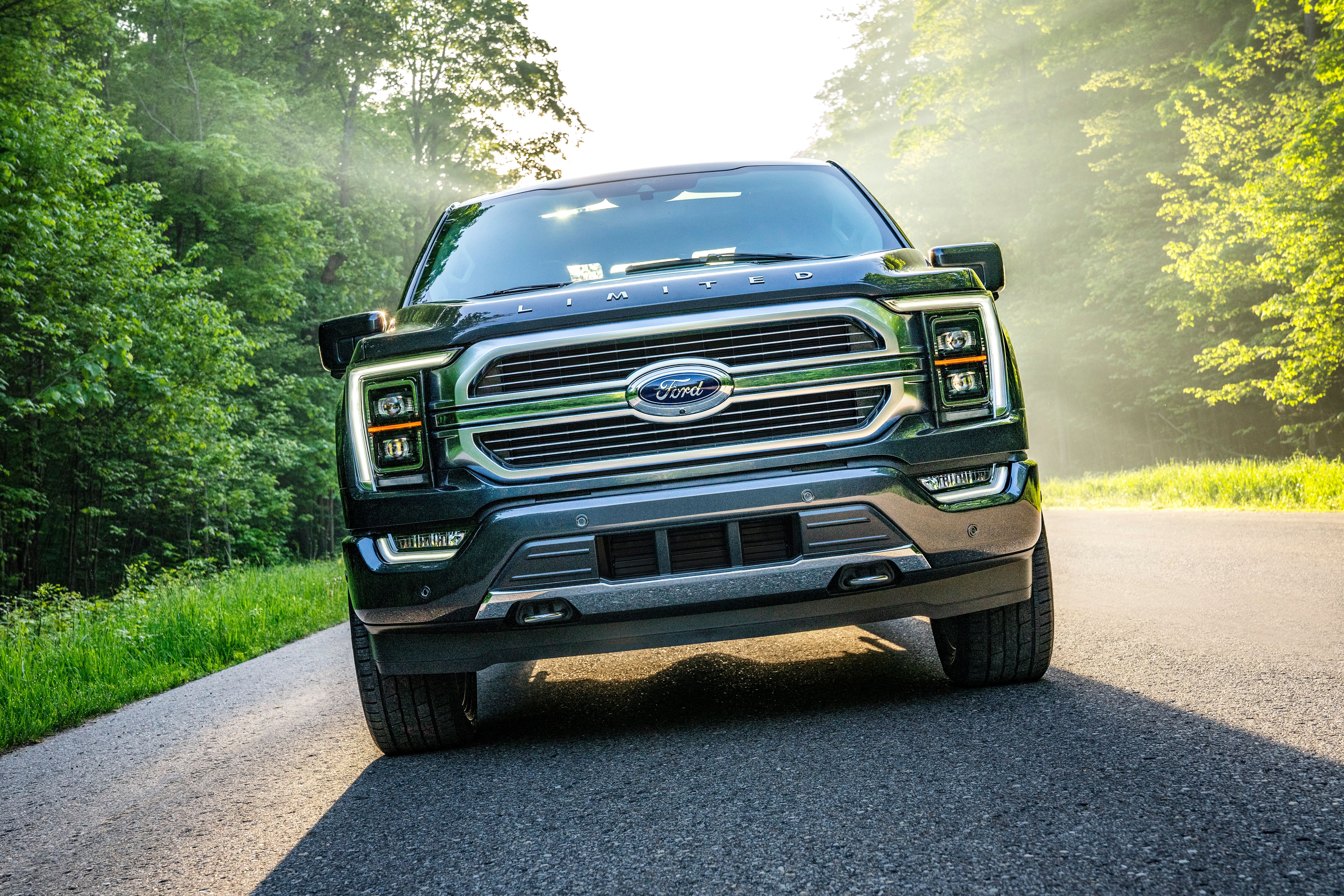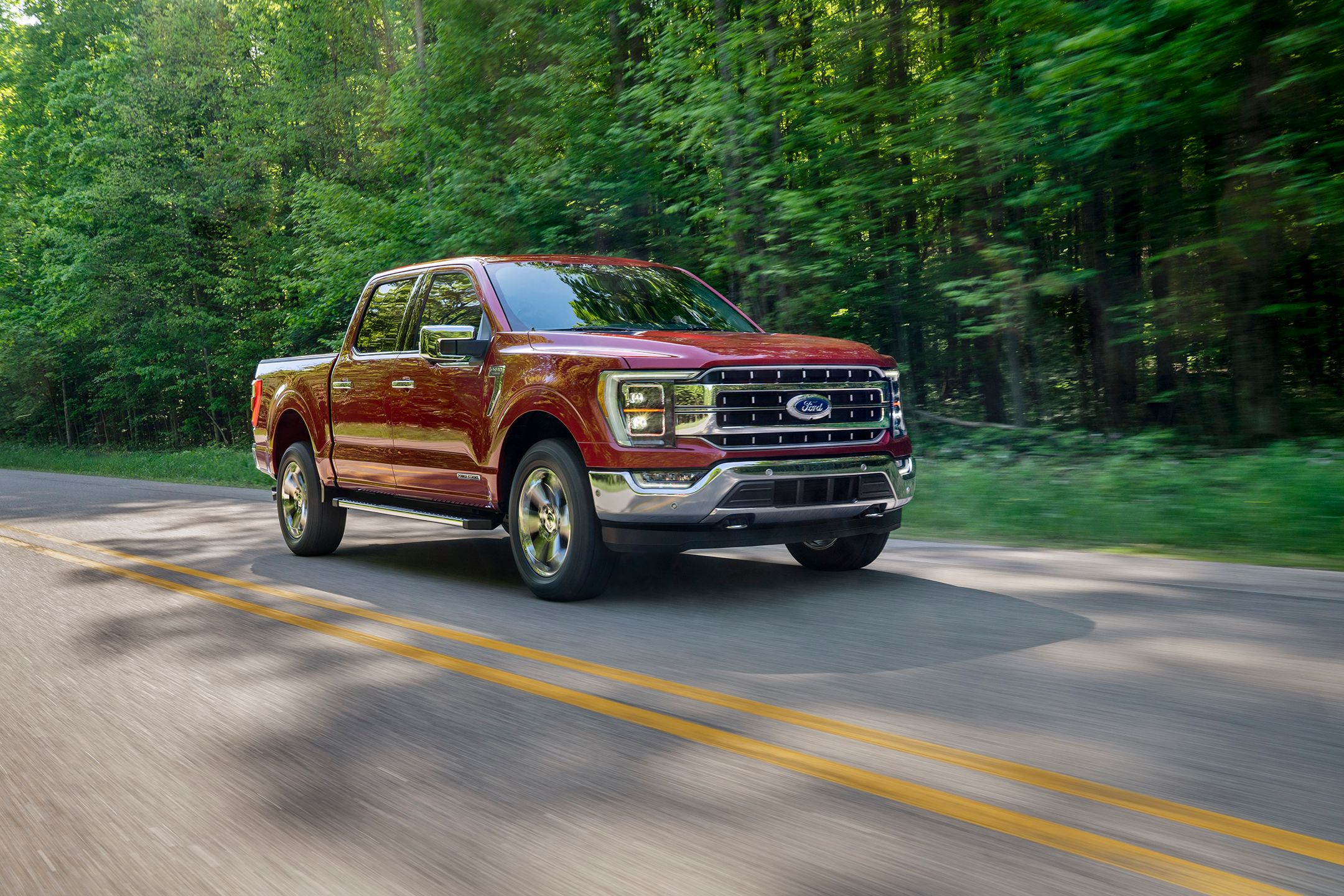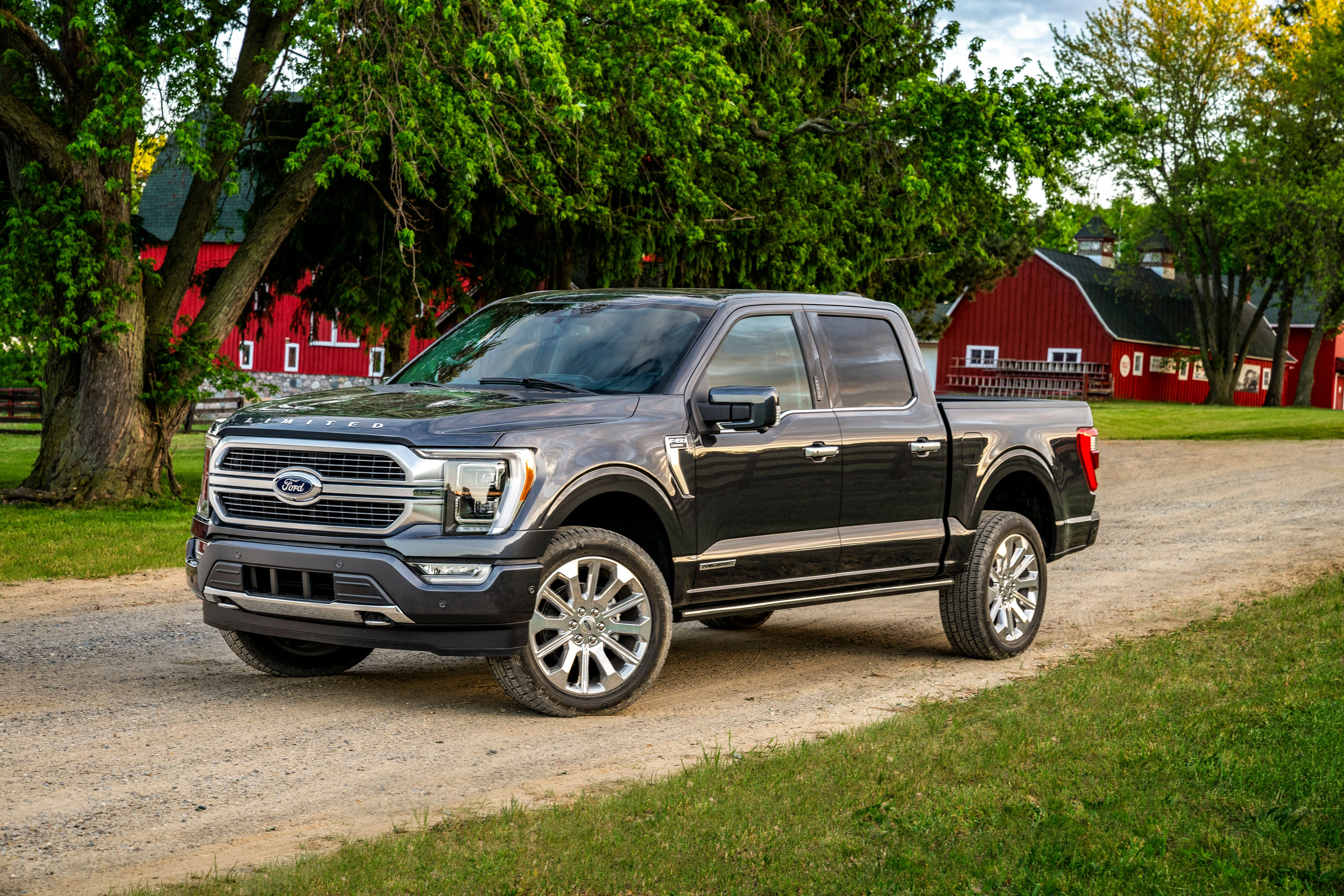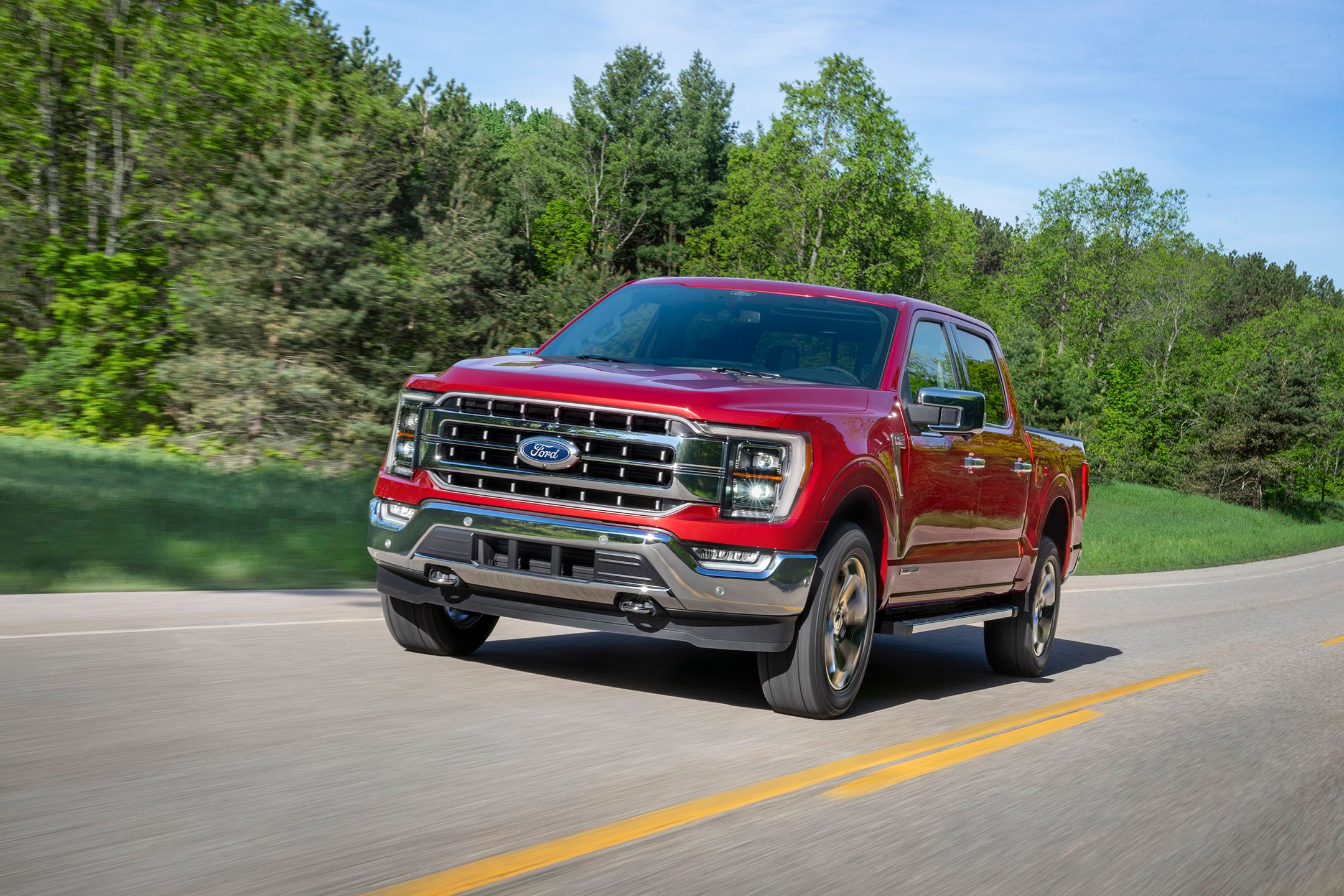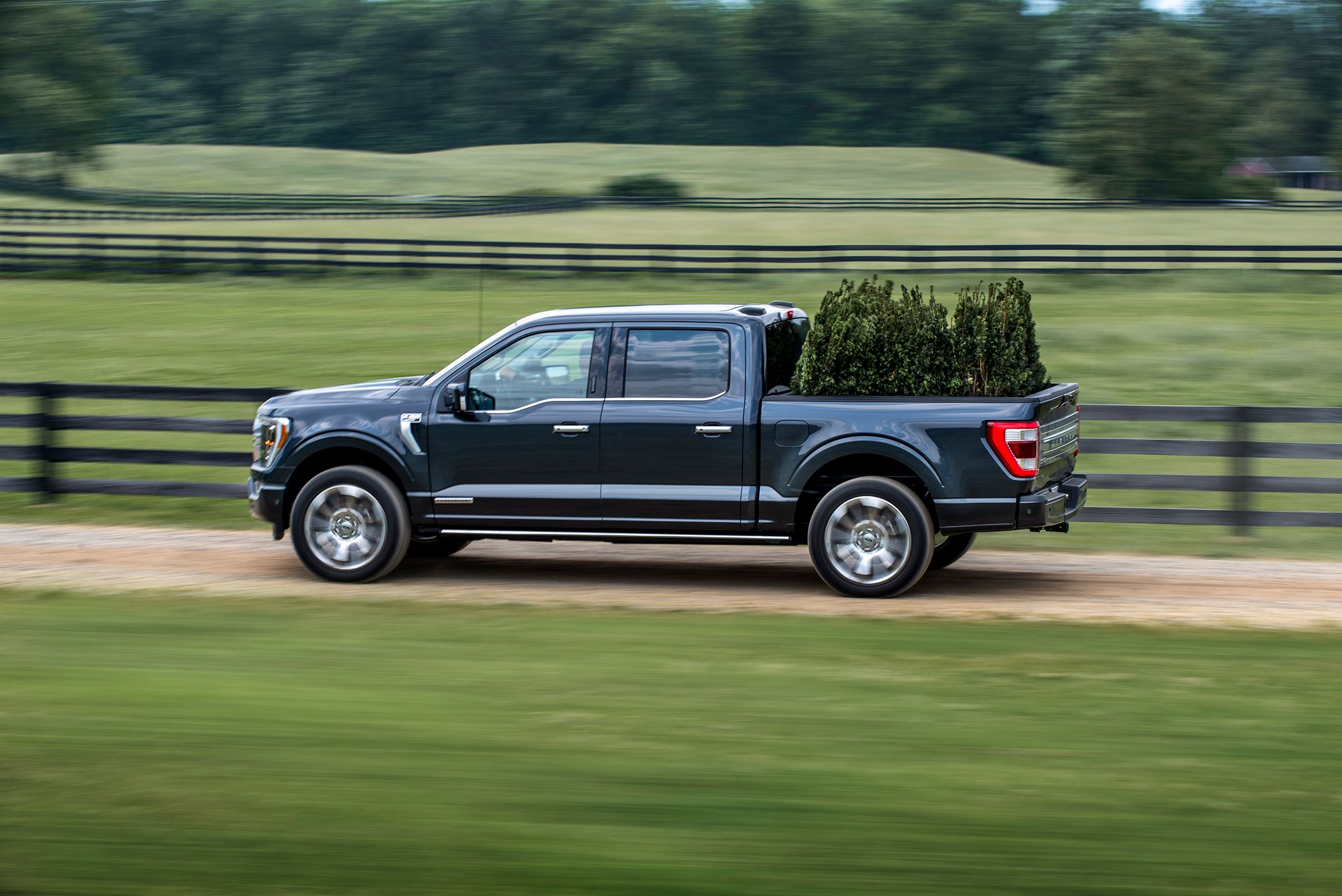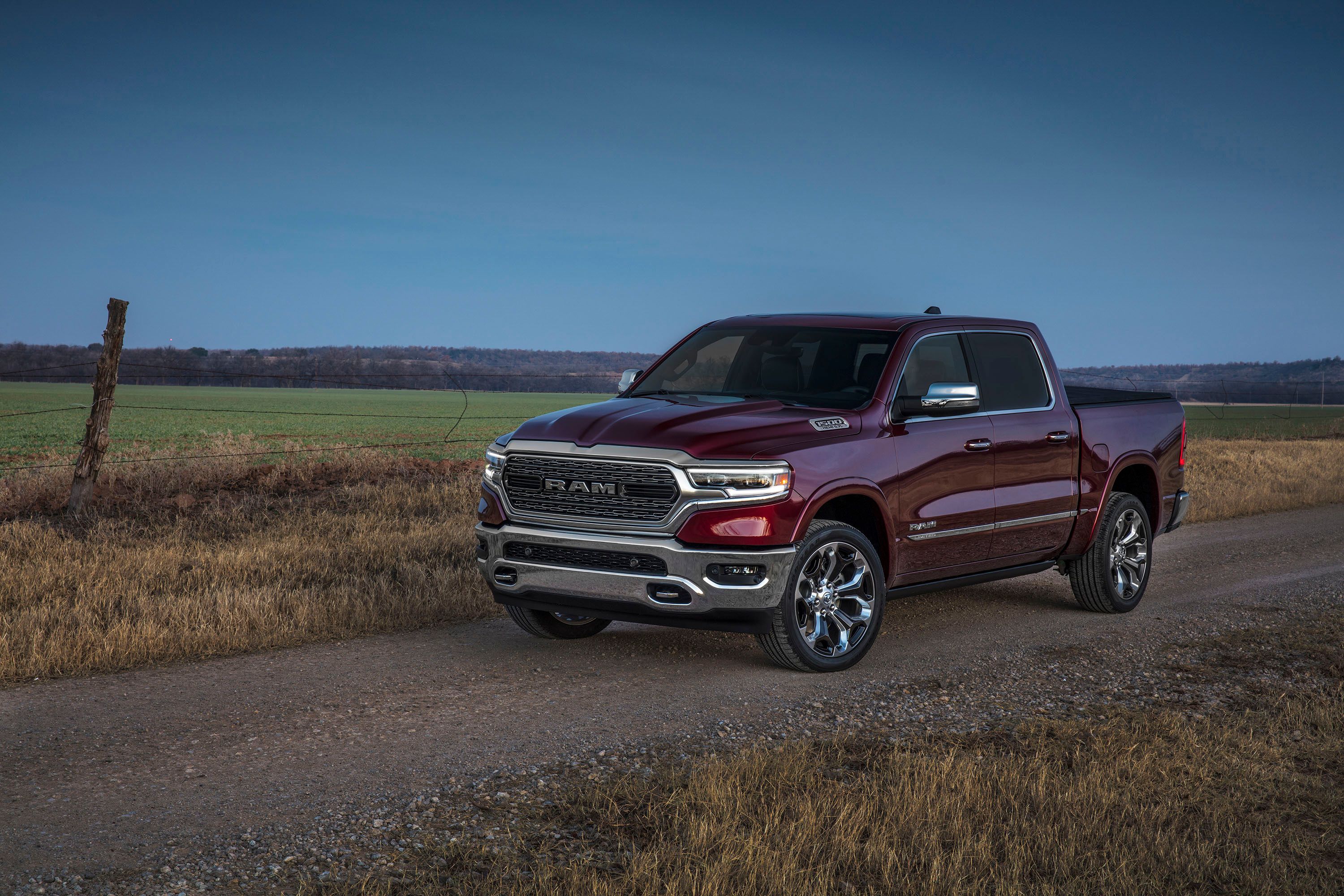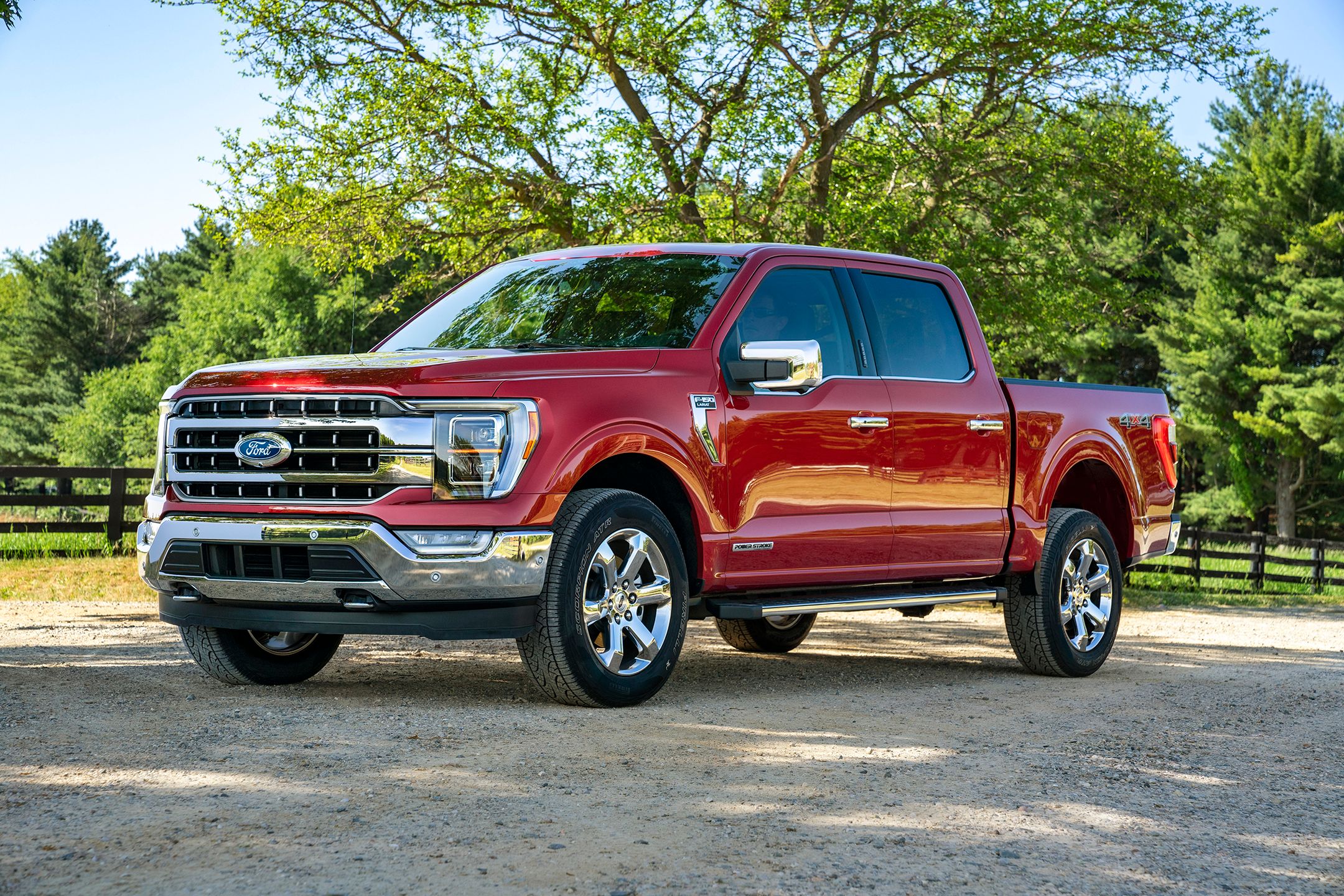One of the most important aspects of a truck is its towing and payload prowess. We see automakers improve their ratings quite often, and that has to do with the structural changes made to the truck. However, this is rendered useless if you don’t offer a powerful mill under the hood to pull all the weight.
Truckmakers are known to offer multiple engine options, but you can’t have them in any body style or trim level. All of this can get quite confusing, so we decided to compare them all. We’ve already covered the 2021 Ford F-150 vs 2021 Chevrolet Silverado 1500, so this time, it’s the 2021 Ram 1500’s turn to be compared to the king of the jungle.
2021 Ram 1500
First up, there’s the 3.6-liter, V-6 Pentastar engine that now comes with an eTorque system as standard. We’ll get back to it in detail later. The engine makes 305 horses and 269 pound-feet of torque. Power is sent to all the wheels via an eight-speed automatic transmission.
If you want a V-8, Ram offers the 5.7-liter, V-8 HEMI engine that churns out 395 ponies and 410 pound-feet of twist. This engine is also mated to an eight-speed TorqueFlite automatic gearbox, but it’s the 8HP75 version and not the 850RE that comes as standard with the Pentastar engine. The same engine and transmission, combo with the same power output figures, can also be had with an eTorque system.
Finally, there’s the third-gen EcoDiesel engine. It is a 3.0-liter, V-6 mill that dishes out 260 horses and 480 pound-feet of torque. This is a noticeable increase over the second-gen EcoDiesel engine that generated 240 ponies and 420 pound-feet of torque. It is paired with the eight-speed TorqueFlite transmission. This engine comes with a water-cooled turbocharger with a variable geometry that helps it respond better to your throttle inputs.
2020 Ram 1500 specifications
|
ENGINE |
3.6-LITER PENTASTAR V-6 WITH eTORQUE |
3.0-LITER EcoDiesel V-6 |
5.7-LITER HEMI® V-8 |
|---|---|---|---|
|
Type and Description |
60-degree V-type, liquid-cooled |
90-degree diesel V-6 |
90-degree V-8, liquid-cooled |
|
Displacement |
220 cu. in. (3,604 cu. cm) |
182 cu. in. (2,988 cu. cm) |
345 cu. in. (5,654 cu. cm) |
|
Bore x Stroke |
3.78 x 3.27 (96.0 x 83.0) |
3.27 x 3.60 (83 x 92) |
3.92 x 3.58 (99.5 x 90.9) |
|
Compression Ratio |
11.3:1 |
16.0:1 |
10.5:1 |
|
Power |
305 HP @ 6,400 RPM |
260 hp @ 3,600 rpm |
395 HP @ 5,600 RPM |
|
Torque |
269 LB-FT @ 4,800 RPM |
480 lb.-ft. @ 1,600 rpm |
410 LB-FT @ 3,950 RPM |
|
Max. Engine Speed |
6,400 RPM (electronically limited) |
5,800 rpm |
5,800 RPM |
Ram eTorque System
This is the closest thing to a hybrid that the automaker has to offer. Ram offers it on the 3.6-liter, V-6 Pentastar and the 5.7-liter, V-8 HEMI. In the V-6, the system adds 12 horses and 39 pound-feet of torque, but is multiplied by the belt drive to create up to 90 pound-feet of torque.
In the V-8, the system adds 16 ponies and 49 pound-feet of torque. It is multiplied by the belt drive to create up to 130 pound-feet of torque. Here, the eToroque is an air-cooled unit sourced from Magneti Marelli. In both cases, the system makes use of a 48-volt, a 0.4-kWh lithium-ion battery, and a DC-DC converter. It is used to charge and run the 1500's 12-volt electrical system. Ram has placed the battery behind the rear seat, thus leaving the cabin as spacious as the models without the eTorque system.
2021 Ford F-150
In the previous models, Ford used to offer two transmissions – a six-speed automatic for the smaller engines and a 10-speed automatic as optional on some engines and standard on some.
The standard engine on the base trims is the same old 3.3-liter, V-6 mill that makes 290 ponies and 265 pound-feet of twist. The 2.7-liter, V-6 EcoBoost engine is also carried over with the same power output figures as before, which is 325 horses and 400 pound-feet of twist. But, thanks to the new, improved gearbox, you will find the engine to be smoother and less revving as opposed to before.
For the 2020 model, Ford used to offer the 3.5-liter, V-6 EcoBoost mill in two states of tune. The one present in the standard F-150 made 375 ponies and 470 pound-feet of torque, whereas the one under the hood of the Raptor produced 450 horses and 510 pound-feet of torque. With the addition of the Hybrid engine to the lineup, Ford is now offering the V-6 EcoBoost in just one state of tune that strikes a balance between the two earlier iterations - 400 horsepower and 500 pound-feet of twist.
The biggest engine in terms of displacement – and the only V-8 in the portfolio – is the 5.0-liter Coyote engine. There were rumors of it getting phased out, but it hasn’t happened so far. When compared to the 2020 iteration, It receives a power bump of five horses and 10 pound-feet of twist, now making 400 horses and 410 pound-feet of torque.
This one is also paired with a 10-speed automatic transmission. but it is a different modular hybrid gearbox that was designed, engineered, and assembled for this engine.
The hybrid system comprises a 35-kilowatt electric motor (47 horsepower) in the transmission housing. This electric motor works together with the engine and utilizes the energy lost during deceleration (regenerative braking). It also supports the Pro Power Onboard generator. The system is powered by a liquid-cooled, 1.5-kilowatt-hour lithium-ion battery pack. Ford has said that it has equipped a belt-driven starter for the water pump and belt-starter motor. Thanks to the hybrid system, the engine offers up to 700 miles from its 30.6-gallon fuel tank. Mind you, this isn’t a plug-in hybrid system and the batteries recuperate on the go.
Which Engine Can You Have On The Trims?
The permutations and combinations get tricky in the case of the Ford F-150 as you can’t have any trim with any option. But, with Ram, things are a bit simpler. You get the Pentastar V-6 mill as standard on all the six trims, except for top limited, but the other engines are offered as an option on all of them. Here’s what both the automakers offer on every trim:
Ram 1500
Tradesman:
-* 3.6-liter, V-6 Pentastar engine with eTorque
-* 5.7-liter, V-8 HEMI engine
-* 5.7-liter, V-8 HEMI engine with eTorque
-* 3.0-liter, V-6 Turbo EcoDiesel engine
Big Horn:
-* 3.6-liter, V-6 Pentastar engine with eTorque
-* 5.7-liter, V-8 HEMI engine
-* 5.7-liter, V-8 HEMI engine with eTorque
-* 3.0-liter, V-6 Turbo EcoDiesel engine
Rebel:
-* 3.6-liter, V-6 Pentastar engine with eTorque
-* 5.7-liter, V-8 HEMI engine
-* 5.7-liter, V-8 HEMI engine with eTorque
-* 3.0-liter, V-6 Turbo EcoDiesel engine
Laramie:
-* 3.6-liter, V-6 Pentastar engine with eTorque
-* 5.7-liter, V-8 HEMI engine
-* 5.7-liter, V-8 HEMI engine with eTorque
-* 3.0-liter, V-6 Turbo EcoDiesel engine
Limited Longhorn:
-* 3.6-liter, V-6 Pentastar engine with eTorque
-* 5.7-liter, V-8 HEMI engine
-* 5.7-liter, V-8 HEMI engine with eTorque
-* 3.0-liter, V-6 Turbo EcoDiesel engine
Limited:
-* 5.7-liter, V-8 HEMI engine
-* 5.7-liter, V-8 HEMI engine with eTorque
-* 3.0-liter, V-6 Turbo EcoDiesel engine
Ford F-150
XL:
-* 2.7-liter, V-6 EcoBoost engine
-* 3.3-liter, V-6 engine
-* 5.0-liter, V-8 Coyote engine
XLT:
-* 2.7-liter, V-6 EcoBoost engine
-* 3.3-liter, V-6 engine
-* 5.0-liter, V-8 Coyote engine
Lariat:
-* 2.7-liter, V-6 EcoBoost engine
-* 3.0-liter, Powerstroke Turbodiesel engine
-* 3.5-liter, V-6 EcoBoost engine
-* 5.0-liter, V-8 Coyote engine
King Ranch:
-* 3.0-liter, Powerstroke Turbodiesel engine
-* 3.5-liter, V-6 EcoBoost engine
-* 5.0-liter, V-8 Coyote engine
-* 3.5-liter, V-6 Powerboost Hybrid
Platinum:
-* 3.0-liter, Powerstroke Turbodiesel engine
-* 3.5-liter, V-6 EcoBoost engine
-* 5.0-liter, V-8 Coyote engine
-* 3.5-liter, V-6 Powerboost Hybrid
Limited:
-* 3.5-liter, V-6 EcoBoost engine
-* 3.5-liter, V-6 Powerboost Hybrid

